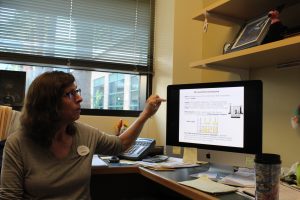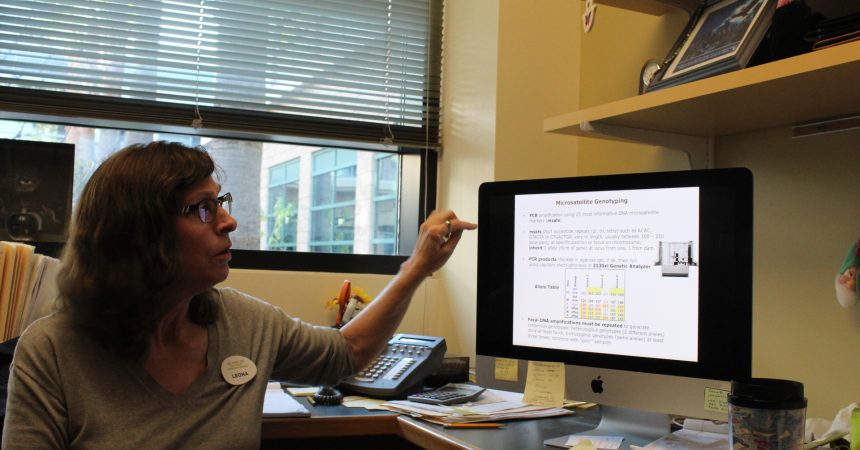Zoo InternQuest is a seven-week career exploration program for San Diego County high school juniors and seniors. Students have the unique opportunity to meet professionals working for the San Diego Zoo, Safari Park, and Institute for Conservation Research, learn about their jobs, and then blog about their experiences online. Follow their adventures here on the Zoo’s website!
 When most people think of “genetics,” their minds usually go to middle school science classes drawing family trees and seeing if they can roll their tongues. At least this is what I think of. I did not imagine that scientists that study genetic codes could have such a prominent role in the world of conservation. I was proved wrong this week when we met Oliver Ryder and Leona Chemnick, two individuals that work in the Conservation Genetics division of the Institute for Conservation Research.
When most people think of “genetics,” their minds usually go to middle school science classes drawing family trees and seeing if they can roll their tongues. At least this is what I think of. I did not imagine that scientists that study genetic codes could have such a prominent role in the world of conservation. I was proved wrong this week when we met Oliver Ryder and Leona Chemnick, two individuals that work in the Conservation Genetics division of the Institute for Conservation Research.
First, the interns met with Dr. Ryder, Director of Conservation Genetics. Dr. Ryder’s job has a large focus on genomic biology and studying and sequencing genomes. A genome is an organism’s complete set of DNA. DNA is the code to our genetic makeup: basically what makes us, us.
Dr. Ryder explained that studying genomes gives us even more detail to understand life. It helps researchers understand what different traits animals carry and which ones may be contributing to species’ decline, such as hereditary diseases. Identifying dangerous genes in genomes is the first big step to preventing extinction. One species Dr. Ryder focused on was the California condor. Their population was at an all time low of only 22 in the 1980s. A problem with scientists studying condors was knowing if they were a boy or a girl. So, Dr. Ryder and other genetic researchers collected blood samples from the California condors to study their genomes and sex condor chicks. Conservation scientists then bred the condors between clans, not within clans and increased the California condor population.
In 2008, Dr. Ryder joined two other individuals and organized a meeting to discuss a project to sequence genomes of 10,000 species, also known as “Genome 10K.” The goal of this project was to compare genomics to see how it plays a role in biodiversity. A huge issue facing endangered species is inbreeding due to habitat loss, which can lead to fatal genetic mutations.
After meeting with Dr. Ryder, the interns met Leona Chemnick, Senior Researcher in the Conservation Genetics division. Ms. Chemnick is working on a project researching Peninsular Desert bighorn sheep, an endangered species that resides in the San Jacinto Valley in Riverside County. The sheep also have a population down in Baja California, but prior to Ms. Chemnick’s study, little was known about them. In order to determine the genetic similarity between the two species, Ms. Chemnick, alongside other researches, worked on a project funded by the Nature Conservancy to study the DNA of the Mexican bighorn sheep. Researchers studied the DNA through DNA extraction of fecal matter. This process was done to obtain genetic profiles for each individual, which ultimately allowed researchers to further analyze their genetic makeup. By understanding how closely related the two populations are, scientists will have a greater understanding of what can be done to save both species from extinction. Ms. Chemnick plans to expand this study further south to get an even better understanding of the Peninsular Desert bighorn sheep in Baja California.
Genetic research is an essential part of conserving many species on the brink of extinction. By studying and sequencing genomes, scientists can observe and track the loss of genetic diversity in species, and apply this knowledge to breeding programs and other conservation projects. They can also discover hereditary diseases to initiate further research on combating those diseases and ending species extinction.
Kailey, Conservation Team
Winter Session, 2017


